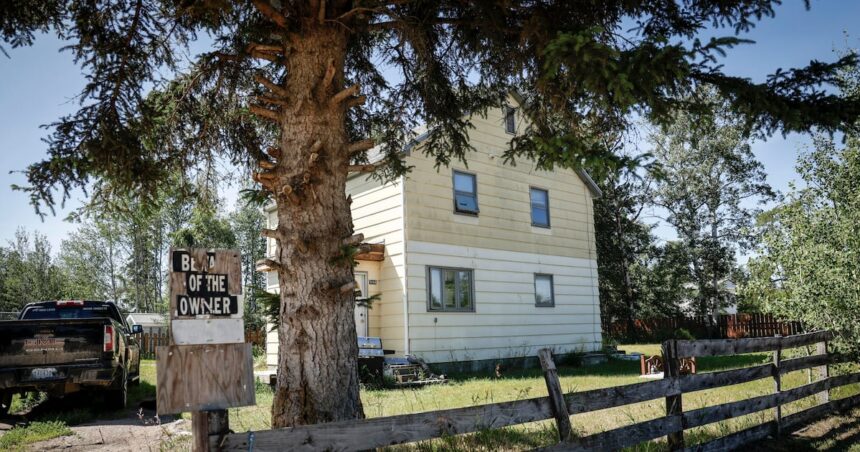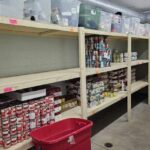Prime Minister Mark Carney touched down in Fort Smith, Northwest Territories yesterday, making his first official visit to his birthplace since taking office four months ago. The trip marks a symbolic homecoming for Canada’s leader, who left the northern community as a child but has often referenced his Arctic roots throughout his political career.
“Coming back to Fort Smith is like closing a circle,” Carney told a crowd gathered at the community recreation center. “The values I learned growing up in the North – resilience, community, and respect for the land – these are the values I bring to my leadership.”
The Prime Minister’s two-day northern tour includes meetings with Indigenous leaders, climate scientists, and local officials focused on northern development priorities. Fort Smith Mayor Jessica Cardinal welcomed Carney’s return, noting how rare it is for the community of 2,500 to see one of their own reach the country’s highest office.
“Whether you agree with his politics or not, there’s pride in seeing someone from here succeed,” Cardinal said in an interview. “We’re hoping this translates to better understanding of northern realities in Ottawa.”
Carney’s northern roots have become central to his political narrative since stepping away from his international banking career to enter Canadian politics. Born at the Fort Smith Health Centre in 1965, Carney lived in the community until age four when his family relocated to Edmonton.
The visit comes as Carney’s government faces mounting criticism over northern infrastructure promises. The $4.2 billion Northern Prosperity Initiative announced in May has moved slower than anticipated, with only 12% of funds allocated according to a Treasury Board report released last week.
Indigenous leaders used the Prime Minister’s visit to press for faster action. Dene National Chief Gerald Antoine met privately with Carney, later telling reporters: “We appreciate the Prime Minister coming home, but we need more than good feelings. We need the federal government to honor its commitments to northern communities with concrete timelines.”
Carney toured climate monitoring stations along the Slave River, where scientists briefed him on accelerated permafrost thaw affecting northern infrastructure. Dr. Stephanie Wong of the Canadian Climate Research Network guided the tour, explaining how northern regions are warming at three times the global average.
“The Prime Minister asked detailed questions about adaptation strategies,” Wong noted. “He clearly understands the technical aspects of climate policy, which isn’t surprising given his background, but seeing the changes firsthand seemed to make an impression.”
Local resident Thomas Beaulieu, who attended the community reception, expressed mixed feelings about the high-profile visit. “My parents went to school with his parents, so there’s that connection. But we’ve seen politicians come and go, making big promises. We’re still waiting on that all-weather road they’ve been promising since the 70s.”
The territorial government used Carney’s visit to advocate for increased federal support for housing and healthcare. NWT Premier Caroline Cochrane presented data showing the territory faces the highest per capita housing costs in Canada, with waitlists for public housing growing by 22% since 2020.
“The Prime Minister has a unique perspective on northern challenges,” Cochrane said. “We’re counting on him to champion our needs in a way previous leaders couldn’t.”
Carney’s northern strategy has been a cornerstone of his government’s economic plan. His “North to Future” initiative aims to position Arctic development as critical to Canada’s economic security amid growing international interest in northern resources and shipping routes.
The trip also carries personal significance for the Prime Minister. During a visit to the Fort Smith Heritage Centre, Carney viewed photographs of his father, who worked as a teacher in the community during the 1960s.
“My father always said the North shaped his worldview,” Carney remarked. “I understand that better now, especially seeing how climate change is transforming these landscapes.”
Climate policy experts see Carney’s northern background as potentially influential in shaping Canada’s approach to Arctic sovereignty and development. “Having a Prime Minister who can speak authentically about northern life changes the conversation,” said Dr. Heather Martin of the Arctic Policy Foundation. “It’s not just about resources or geopolitics – it’s about communities and livelihoods.”
The Prime Minister concludes his northern tour tomorrow with stops in Yellowknife and Inuvik before returning to Ottawa for next week’s provincial premiers’ conference. Meanwhile, Fort Smith residents say they’ll be watching closely to see if Carney’s homecoming translates into meaningful change for northern communities.
“It’s nice he remembers where he came from,” said lifelong resident Marie Firth, who attended school with Carney’s older siblings. “But we need more than memories. We need a government that treats the North as more than an afterthought.”






